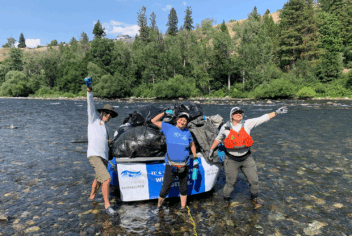Many commercial insurance companies do not offer coverage to nonprofits because of the special risks this sector presents, such as the use of volunteers, the frequent interactions with vulnerable populations, the small size of many nonprofits, the unusual auto exposures, and the misperception that nonprofits are not well-managed. This article does not address those issues. This article discusses how to put your best foot forward as a nonprofit to an insurance carrier that is already inclined to offer insurance to a nonprofit. We also recommend that before reading this article, you take a look at our past blog The Difference Between an Insurance Carrier and an Insurance Broker. This will help assure that you have a good foundation of knowledge for understanding the information below.
Whether your nonprofit is looking into getting insurance for the first time, it has a long-standing policy that’s coming up for renewal, or it’s shopping for a new policy, knowing how to put your best foot forward when communicating with insurance professionals can make all the difference. In fact, poor communication with your broker can leave your nonprofit with inadequate coverage, as well as a potentially higher premium than necessary, and trust us – you don’t want either of those things. But what exactly makes a nonprofit look bad, or less-than-appealing? We’ve gathered the top three problems below.
1. Inconsistent Information
One of the most common problems is inconsistent information provided on applications for insurance. Generating a quote involves looking at a host of information related to the staff, volunteers, location, and operations of your nonprofit, which is why your broker will ask you to fill out insurance applications, which they will then submit to insurance companies in order to get a quote. These applications, in conjunction with other resources such as your nonprofit’s website or promotional materials, help the insurance understand what your nonprofit does, as well as the risks to which it is exposed. This information is what the insurance company uses to develop a quote for your nonprofit, which ultimately becomes the price, terms and conditions of the insurance policy if coverage is bound.
When information on one insurance application doesn’t match information on another, or the information available on your nonprofit’s website or in promotional materials is different from what is listed on the applications, it can make gauging what it is your nonprofit does and what potential risks it faces difficult. For example, if your nonprofit’s website displays a photo of youth playing a sport, but there is no mention of sports activity in your applications, the insurance company will not have a clear understanding of the programs offered. This sort of discrepancy can lead to additional underwriting questions, involving extra back and forth between you, your insurance broker and the insurance company. Sometimes such lack of clarity can result in unnecessary terms and conditions being placed on your insurance policy.
What’s the best way to avoid this? Double check your applications to ensure everything is consistent. If your nonprofit has a website or any materials that may also be viewed by the public, such as your 990, make sure any and all activities displayed have been included in the applications and are currently being performed by your nonprofit.
2. Incomplete Applications
Incomplete applications are just as bad, if not worse than inconsistent ones, and they too can make your nonprofit look less appealing to an insurance company. A sloppily completed application can make it appear that your nonprofit doesn’t take documentation seriously or that you don’t have a good grasp of your operations. Remember, if an insurance company is going to have to guess, they are probably going to guess high! Check your applications for accuracy and completeness before you submit them to your broker. Don’t just look for inconsistent information; look for missing information as well!
It’s just not worth the risk to under-report your activities in hopes of getting a better price. These things have a way of turning out badly. It is always better to be up-front so that your nonprofit doesn’t end up with inadequate coverage when a claim arises!
3. A Claims History with Frequency and Severity and No Clear Fix
Nonprofits often think that poor claims history makes them look bad to an insurance company, but that’s not entirely true. What looks bad isn’t necessarily the claims themselves, but a lack of response to the issue that caused them. If your nonprofit has experienced frequent or severe claims activity and cannot speak to what changes have been made to address the issue and reduce or eliminate the potential for a repeat claim, that can look less than ideal to an insurance company. What’s the best way to avoid this? Provide a statement acknowledging previous claims issues and identifying how they’re being addressed.
You most likely will be asked for your nonprofit’s loss runs, or its claims history. Some may think that by avoiding providing a claims history they can mask poor previous claims experience. However, remember what we said earlier: when insurance companies have to guess, they invariably guess high! Also, nonprofits that have experienced a lower loss ratio than similar insureds may qualify for a lower premium, which means providing loss information can be beneficial.





